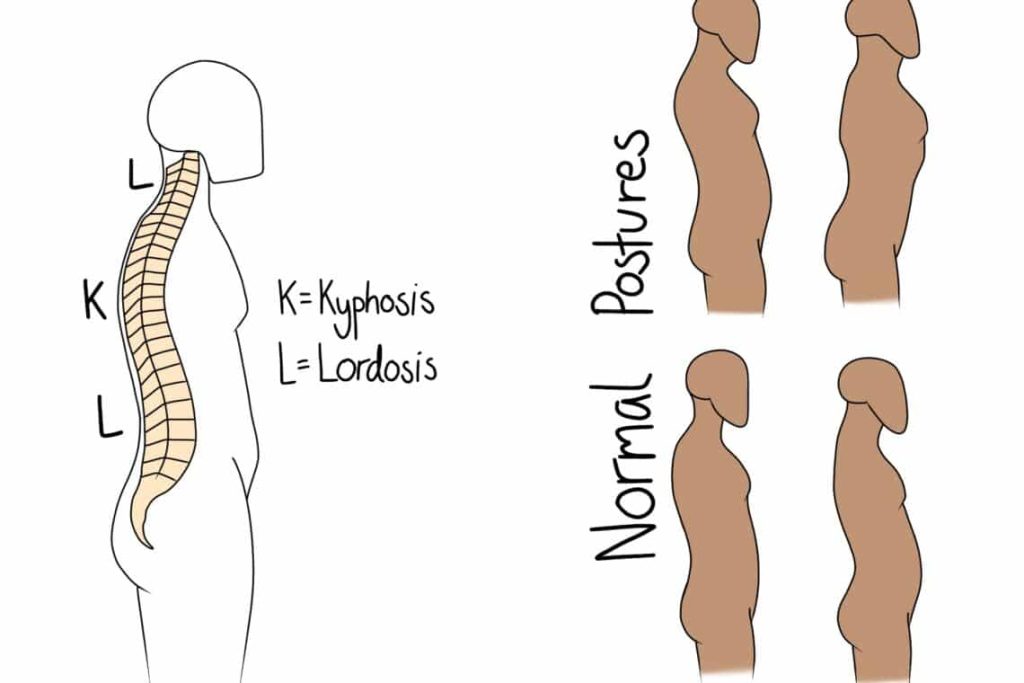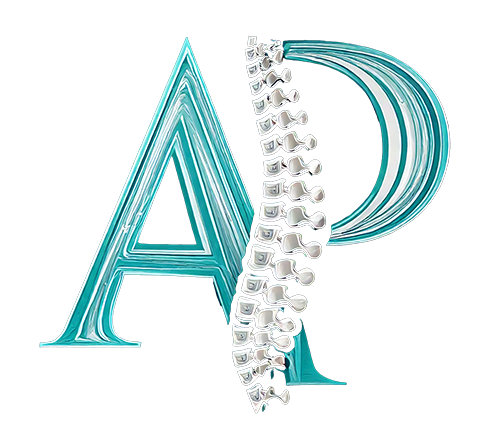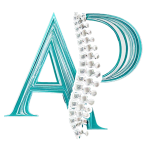Kyphosis and Lordosis
Unlike having a scoliosis, it is not a problem, nor a diagnosis to “have a lordosis”. Everyone more than a few days old will have them, and you will have had your kyphosis since before birth.

Kyphosis
A Kyphosis is an area of the spine that sticks out. The main one is the upper back, or thoracic spine. There is a secondary one in the sacrum and coccyx (tailbone).
Some conditions lead to a more prominent kyphosis, such as osteoporosis and Scheuermann’s disease (formally known simply as “kyphosis”). In these cases, the shape of the bones in the upper back is changed. Osteoporotic vertebral crush fractures typically cause the vertebrae to become wedge shaped. Scheuermann’s leads to wedge shaped vertebrae too, although this is due to the speed at which the front and back of the vertebral body is growing. If increased thoracic kyphosis is accompanied by discomfort or reduced movement, your osteopath may be able to help.
Lordosis
A lordosis is where the spine dips in. There is a lordosis in the neck, and another in the lower back. These are known as the cervical lordosis and lumbar lordosis respectively.
One period in which the lumbar lordosis may become exaggerated is in pregnancy. As the bump grows, the body may arch the back in reaction. This can cause intermittent pain by compressing the structures at the back of the spine. Although this will only be a temporary problem, we may be able to help in the meantime.
Kyphosis, Lordosis, Posture, and Pain
You may have seen images online labelling different postures alongside the “good” posture. In reality, we are all built as differently on the inside as we are on the outside. Therefore, one person’s “perfect posture” would be different to another’s.
The real problem is being too still for too long. If you stood still in the most perfect position for a couple of hours, you would have some sort of discomfort. We are designed to move, and moving through “bad” postures will always be necessary sometimes.
As a general rule, if the way you stand and move does not cause any problems, it does not need changing.
Osteoarthritis and Spinal Curves
The thoracic kyphosis and cervical lordosis become more apparent in people with advanced hip osteoarthritis. The body compensates for the lost movement in the hip by bending forwards, then brings the head back up with more extension in the neck.
The ideal solution is to catch it before reaching this stage, but there may be something that can be done further down the line. If your hip arthritis has led to a joint replacement and you are left with this posture, we can help to train your body back to where it should be.
If you’re worried about your posture, or just want a check up, you can make an appointment online now.

